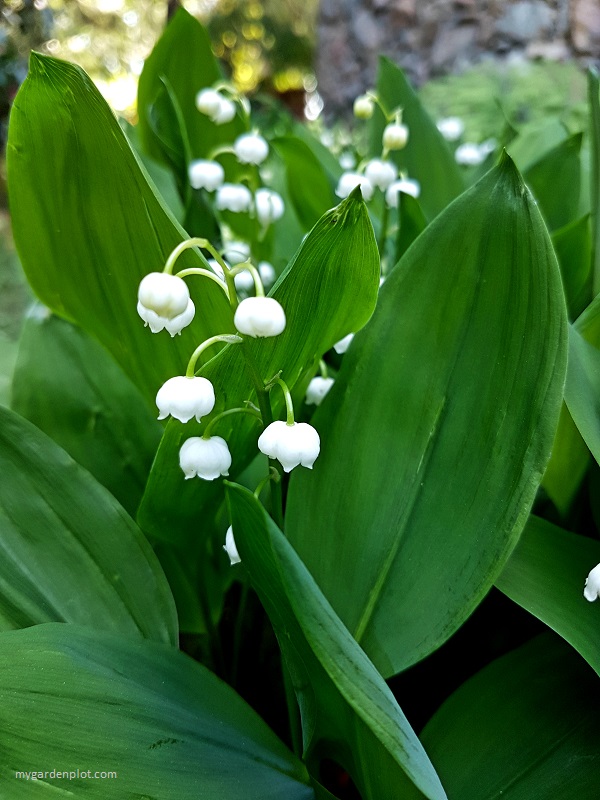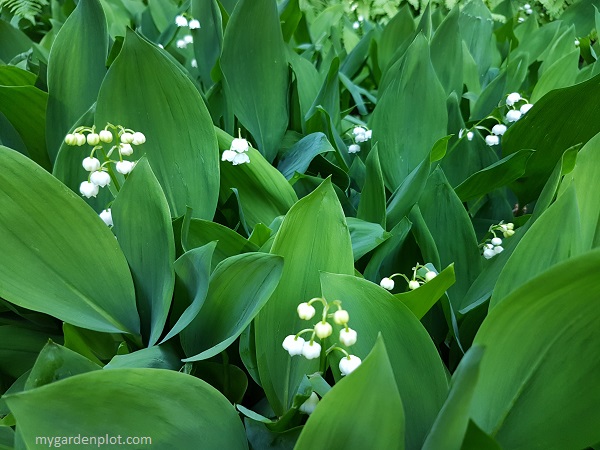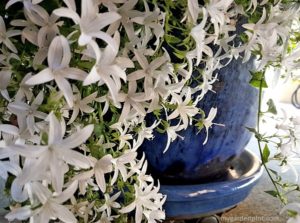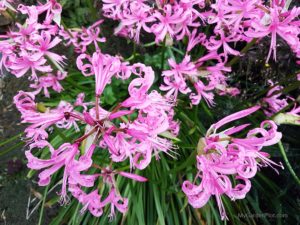Convallaria majalis: Lily-Of-The-Valley
In the warm evening, the intoxicating sweet fresh fragrance from the lily of the valley is seductive, uplifting. Our sense of smell draws us first to it before we cast our gaze on the carpet of green leaves with small, nodding white flowers. The lily of the valley is native in some forested regions in Asia, Europe and N. America. Read more below where to plant lily of the valley, and how to care and grow lily of the valley in a controlled area.
As a versatile groundcover, the lily of the valley looks beautiful under a canopy of trees. Or planted to spread along a pathway. The dainty bell-shaped flowers bloom in spring. Along with the enchanting fragrance, it offers a vibrant and attractive spreading mass in any garden. Lily of the valley are great companion plants in a garden bed with hostas, candelabra primulas, and western maidenhair fern.
The enchanting fragrance of lily of the valley goes way back in history and today its popularity can range personal care to home items.
Different Types Of Lily Of The Valley
While most lily of the valley flowers are white, there is a pale pink variety named ‘Rosea.’ Recommended types include the ‘Flore Pleno’ or ‘Prolificans.’ These have beautiful double white flowers, or the ‘Fortin’s Giant,’ which, as the name implies, is the larger variety with bigger leaves and flowers than the classic C. majalis. These flower a little later too. Your local garden shop may offer some or all types to choose from.
Lily Of The Valley At A Glance
Type: Bulb, Perennial
Location: Partial Shade
Blooming Season: Spring
Height: 15-20 cm (6-8 inches)
Plant Hardiness Zones: 2, 3, 4, 5, 6, 7, 8, 9
Where To Plant And How To Care For Lily Of The Valley
Lily of the valley should be planted out in early spring or autumn.
It is an easy-care plant that thrives in moist, part shady locations. Provided lily of the valley have damp soil, they can grow in a sunny spot. In this situation, they will need compost or leaf mulch to keep the soil from completely drying out. The lily of the valley can adjust to drier shade condition given they are sheltered under shrubs or at the shady base of evergreen trees such as Douglas firs or cedars.
It is generally trouble-free, but on occasion, mould or stem rot can affect it.
If needed, clumps of the rhizomes can be divided during winter. Alternatively, ripe seeds can be grown in a cold frame.
Gardening Tips For Growing Lily Of The Valley
Lily Of The Valley Toxicity
The entire plant, including the leaves, flowers, fruit and roots, is highly poisonous. Special care should be taken, especially if children and pets are playing near the plant. Or if you bring lily of the valley indoors as cut flowers. And as a gardener when handling the plant in the garden it is best to use caution. Wear garden gloves when handling lily of the valley.

Spend more time in the garden! Large choice of gardening supplies for your garden bed and maintaining lawns, and fun art and sculptures for your garden and vegetable patch. Check out the latest deals for garden supplies. View the awesome deck decorations and patio furniture, and the necessary garden tools, and more.






